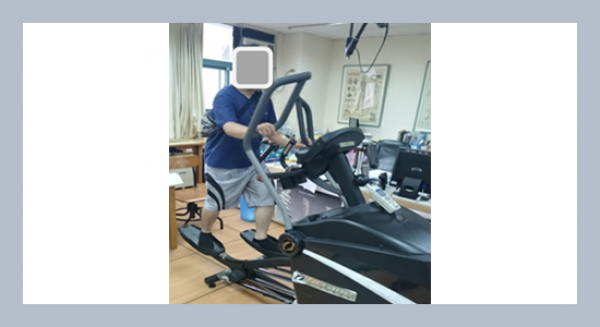REFERENCES
- Afanasiev, O. 2022. Birdwatching, ornitological tourism and avitourism: Terminological dispute and review of world and Russian practices. Anais Brasileiros de Estudos Turísticos, 12, 1–12.
- Ali, L., Alnajjar, F., Jassmi, H., Gocho, M., Khan, W., Serhani, M. 2021. Performance evaluation of deep CNN-based crack detection and localization techniques for concrete structures. Sensors, 21, 1688.
- Alzubaidi, L., Zhang, J., Humaidi, A., Al-Dujaili, A., Duan, Y., Al-Shamma, O., Santamaría, J., Fadhel, M., Al-Amidie, M., Farhan, L. 2021. Review of deep learning: Concepts, CNN architectures, challenges, applications, future directions. Journal of Big Data, 8, 1–74.
- Catchpole, C., Slater, P. 2003. Bird song: Biological themes and variations. Cambridge University Press. Cambridge. UK.
- Chápuli, R. 2018. ¿Hay música en el canto de las aves? Encuentros en la Biología, 11, 21–25.
- Chen, G., Xia, C., Zhang, Y. 2020. Individual identification of birds with complex songs: The case of green-backed flycatchers ficedula elisae. Behavioural processes, 174, 104063.
- Chen, S.-S., Li, Y. 2013. Automatic recognition of bird songs using time-frequency texture. Proceeding of 5th International Conference and Computational Intelligence and Communication Networks. Mathura, India. 262–266.
- Donegan, T., Verhelst, J., Ellery, T., Cortés-Herrera, O., Salaman, P. 2016. Revision of the status of bird species occurring or reported in Colombia 2016 and assessment of BirdLife International’s new parrot taxonomy. Conservación Colombiana, 27, 12–36.
- Fagerlund, S. 2007. Bird species recognition using support vector machines. EURASIP Journal on Advances in Signal Processing, 038637, 1–8.
- González, J., Padrón, J., Barbero, I., Custodio, L., Merchán, F. 2019. Reconocimiento de canto de aves basado en el análisis de componentes principales del espectrograma. Revista de Iniciación Científica, 5, 124–129.
- He, K., Zhang, X., Ren, S., Sun, J. 2016. Deep residual learning for image recognition. Proceedings of the IEEE conference on computer vision and pattern recognition. Las Vegas, USA. 770–778.
- Hsu, S., Lee, C., Chang, P., Han, C., Fan, K. 2018. Local wavelet acoustic pattern: A novel time–frequency descriptor for birdsong recognition. IEEE Transactions on Multimedia, 20, 3187–3199.
- Hvenegaard, G., Dearden, P. 1998. Ecotourism versus tourism in a Thai national park. Annals of Tourism Research, 25, 700–720.
- Institute Humboldt. 2020. Descarga en tu celular los sonidos de la Biodiversidad colombiana. Retrieved 2022-04-12 from http://www.humboldt.org.co/es/noticias/actualidad/item/107-descarga-en-tu-celular-los-sonidos-de-la-biodiversidad-colombiana
- Ketkar, N., Moolayil, J. 2021. Convolutional neural networks. In Deep Learning with Python. Berkeley: Apress. California, USA.
- Khanna, H., Gaunt, S., McCallum, D. 1997. Digital spectrographic cross-correlation: Tests of sensitivity. Bioacoustics, 7, 209–234.
- Kingma, D. P., Ba, J. 2014. Adam: A method for stochastic optimization. arXiv:1412.6980.
- Kogan, J., Margoliash, D. 1998. Automated recognition of bird song elements from continuous recordings using dynamic time warping and hidden Markov models: A comparative study. The Journal of the Acoustical Society of America, 103, 2185–2196.
- Lee, C., Han, C., Chuang, C. 2008. Automatic classification of bird species from their sounds using two-dimensional cepstral coefficients. IEEE Transactions on Audio, Speech, and Language Processing, 16, 1541–1550.
- Mathew, A., Amudha, P., Sivakumari, S. 2021. Deep learning techniques: An overview. Proceeding of International Conference on Advanced Machine Learning Technologies and Applications. Singapore. 1141.
- Nair, V., Hinton, G.E. 2010. Rectified linear units improve restricted boltzmann machines. Proceedings of the 27th international conference on machine learning (ICML-10). Haifa, Israel.
- Ocampo-Peñuela, N., Winton, S. 2017. Economic and conservation potential of bird-watching tourism in postconflict Colombia. Tropical Conservation Science, 10, 1–6.
- Quintana, V. 2017. El turismo de naturaleza: Un producto turístico sostenible. Arbor Ciencia, Pensamiento y Cultura, 193, 1–14.
- Simonyan, K., Zisserman, A. 2014. Very deep convolutional networks for large-scale image recognition. arXiv, 1409, 1–14.
- Steven, R., Morrison, C., Castley, J. 2015. Birdwatching and avitourism: A global review of research into its participant markets, distribution and impacts, highlighting future research priorities to inform sustainable avitourism management. Journal of Sustainable Tourism, 23, 1257–1276.
- Steven, R., Rakotopare, N., Newsome, D. 2021. Avitourism tribes: As diverse as the birds they watch. Singapore: Springer.
- Sukri, M., Fadlilah, U., Saon, S., Som, M., Sidek, A. 2020. Bird sound identification based on artificial neural network. Proceeding of 2020 IEEE Student Conference on Research and Development (SCOReD). 342–345.
- Szegedy, C., Vanhoucke, V., Ioffe, S., Shlens, J., Wojna, Z. 2016. Rethinking the inception architecture for computer vision. Proceedings of the IEEE conference on computer vision and pattern recognition. 2818–2826.
- Tanttu, J., Jari, T., Ojanen, M. 2003. Automatic classification of flight calls of Crossbill species (Loxia spp.). Proceedings of the 1st International Conference on Acoustic Communication by Animals. 239–240.
- Wang, H., Xu, Y., Yu, Y., Lin, Y., Ran, J. 2022. An efficient model for a vast number of bird species identification based on acoustic features. Animals, 12, 2434.
- Xeno-canto Foundation. 2021. Compartiendo cantos de aves de todo el mundo. Retrieved 2022-06-06 from https://www.xeno-canto.org/about/xeno-canto
- Zhang, X., Chen, A., Zhou, G., Zhang, Z., Huang, X., Qiang, X. 2019. Spectrogram-frame linear network and continuous frame sequence for bird sound classification. Ecological Informatics, 54, 101009.















